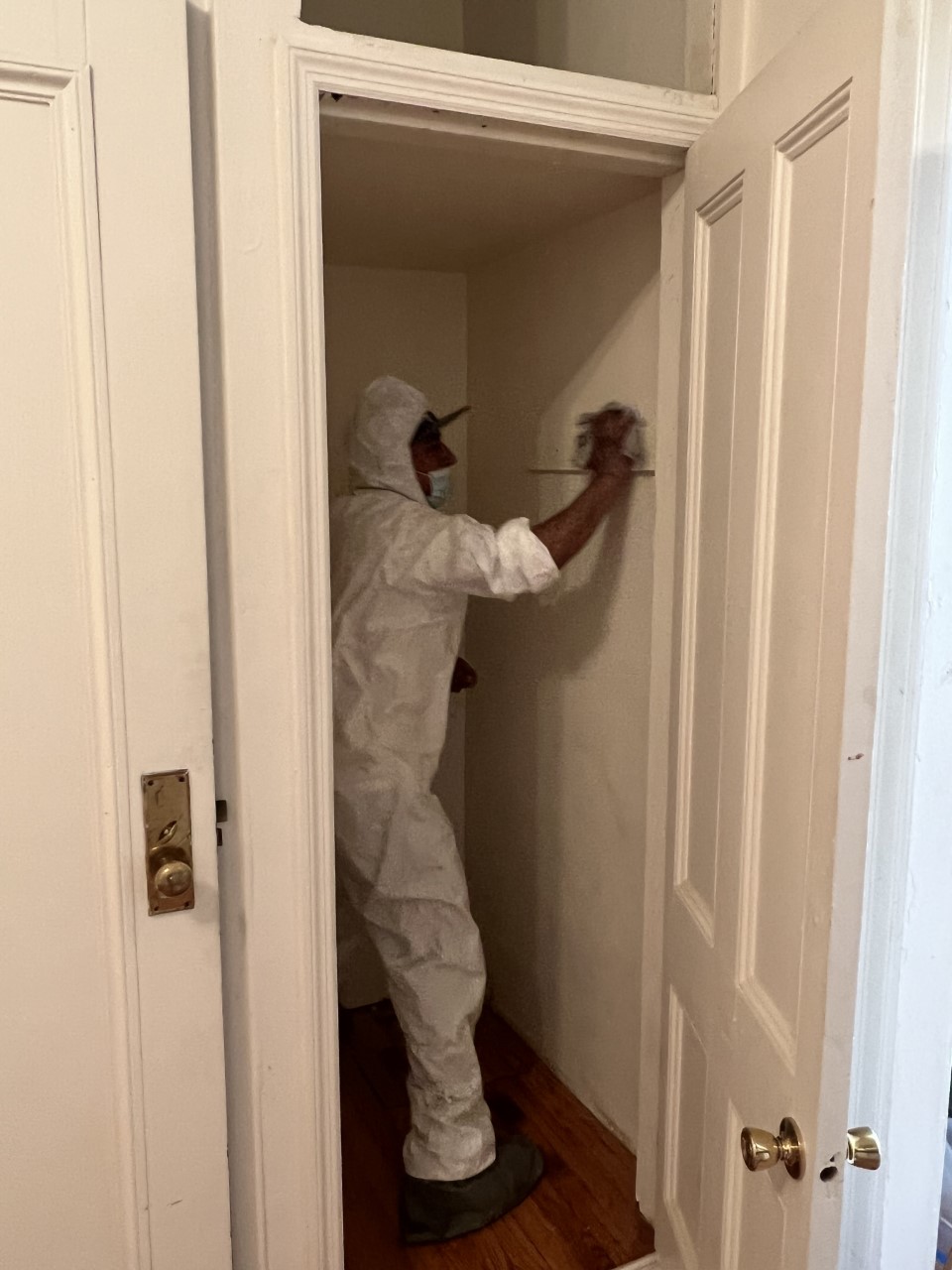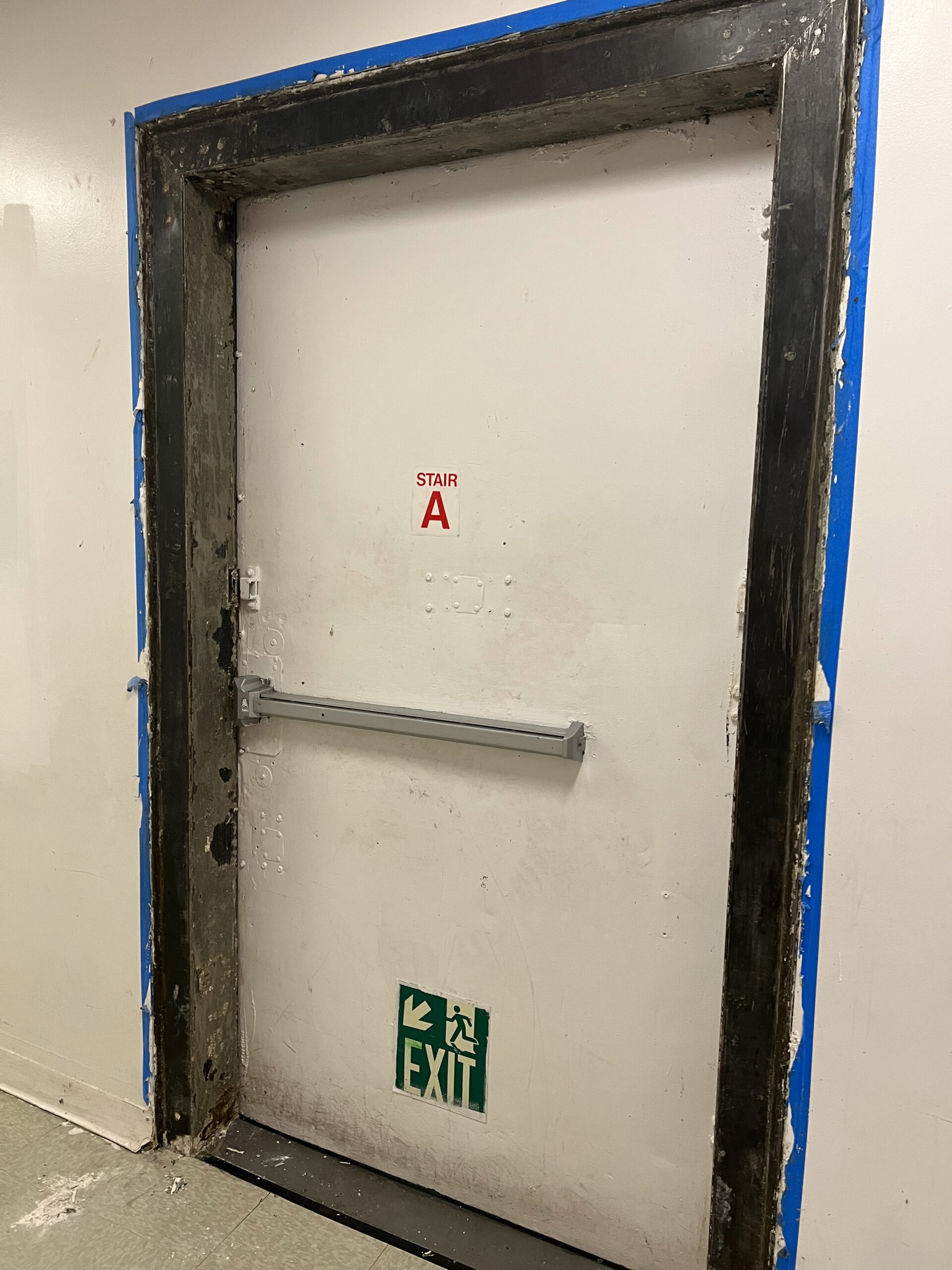Comprehensive Lead Paint Removal Service in NYC-- Accredited and Qualified
Comprehensive Lead Paint Removal Service in NYC-- Accredited and Qualified
Blog Article
Comprehensive Overview on Effective Lead Infraction Elimination Techniques
In the realm of ecological safety and security, resolving lead infractions demands a meticulous and organized method. This detailed guide starts by highlighting the crucial first actions of determining lead threats with sophisticated assessment and testing methods. Methods such as XRF analysis and dust clean sampling are crucial in pinpointing contamination resources. The guide clarifies on the relevance of adhering to rigorous safety and security procedures during the elimination process, consisting of the usage of proper PPE and separating influenced locations. The succeeding sections guarantee to review post-removal confirmation and preventative approaches, ensuring lasting safety and conformity. Discover the elaborate information that make these strategies not simply reliable yet essential.
Identifying Lead Threats
Identifying lead dangers is a vital initial step in alleviating the risks associated with lead direct exposure. Lead, a hazardous metal, can be present in various environmental mediums, including paint, dirt, water, and dirt. It positions extreme health and wellness risks, particularly to youngsters and expectant women, bring about neurological damages and developing delays. For that reason, exact identification of possible lead sources is necessary for efficient removal.
The initial stage in recognizing lead hazards involves understanding common lead sources within the developed atmosphere. Structures developed before 1978 are especially vulnerable because of the common usage of lead-based paint throughout that duration. Furthermore, dirt contamination can occur from deteriorating exterior paint, industrial emissions, or historical use leaded gas.
One more significant resource is lead piping and pipes components, which can seep introduce drinking water. Consumer goods such as playthings, porcelains, and imported products may also contain harmful lead degrees. Especially, job-related settings and pastimes including lead can track contaminants into homes.
Assessment and Screening
When resolving lead hazards, effective assessment and screening are vital. This important step makes certain the recognition and quantification of lead visibility, thus directing subsequent removal efforts. First evaluation generally involves an aesthetic inspection to recognize possible lead sources, such as wearing away paint or polluted dirt. This is matched by more extensive testing methods to determine the level of contamination.

Dirt wipe tasting is another essential method, specifically in residential settings. By gathering examples from floorings, windowsills, and other surface areas, this method gives understandings right into prospective exposure dangers. In addition, dirt screening around building perimeters is vital to detect lead contamination that could position dangers, specifically to youngsters.
Safe Removal Procedures
Upon completing thorough assessment and testing, implementing safe elimination treatments is the following essential stage in attending to lead dangers. This procedure makes sure that lead-contaminated materials are efficiently and safely eradicated, minimizing threat to both workers and homeowners. The primary step entails separating the afflicted area using plastic sheeting and appropriate sealing strategies to protect against the great site spread of lead dirt.
Workers must wear proper personal protective tools (PPE), consisting of respirators, gloves, and disposable coveralls, to minimize direct exposure. Using specialized devices and wet approaches, such as damp sanding or utilizing HEPA-filtered vacuums, reduces the diffusion of lead bits. It is crucial to stay clear of dry fining sand or rough blasting, as these approaches can produce harmful lead dirt.
Waste disposal is an additional crucial component; all polluted materials need to be securely gotten and identified according to EPA and neighborhood policies. In addition, complete cleaning of the workplace with HEPA vacuums and damp wiping ensures the elimination of residual lead bits.
Post-Removal Confirmation

Confirmation of effective lead removal, referred to as post-removal confirmation, is vital to ensure the security and habitability of the remediated location. This process includes a collection of thorough assessments and examinations made to spot any type of recurring lead particles that may present wellness risks. The initial step commonly consists of a visual inspection to analyze the completion and top quality of see the remediation work. This inspection guarantees that all recognized resources of lead have actually been addressed and that no visible indications of contamination stay.
Adhering to the aesthetic examination, ecological tasting is carried out. This includes gathering dust, soil, and sometimes water examples from the remediated location. Approved research laboratories assess these examples to determine lead levels, ensuring they drop listed below the security limits developed by regulative bodies such as the Epa (EPA)
Additionally, air quality screening might be carried out to identify airborne lead particles, specifically in instances where substantial lead-based paint removal or renovation has actually taken place. The results of these examinations supply measurable information verifying that the lead levels are within permitted limitations.
Ultimately, post-removal confirmation works as a vital checkpoint, verifying the effectiveness of the lead reduction efforts and safeguarding the health and wellness of residents and site visitors.
Safety Nets and Upkeep

A vital precautionary action includes using lead-safe accredited service providers for any type of renovation, repair service, or paint activities. These specialists are learnt methods that minimize lead dust and particles. Additionally, preserving coloured surfaces to prevent damaging or peeling is important, as deteriorating paint can launch lead particles into the setting.
Educational initiatives targeting homeowner and lessees pertaining to the dangers of lead and the value of reporting any kind of potential dangers can better boost preventive efforts. Routine cleansing using HEPA vacuum cleaners and damp wiping techniques can considerably minimize lead dirt buildup.
Conclusion
In recap, effective lead infraction removal necessitates a thorough technique including thorough analysis, specific screening, and stringent elimination treatments. Continuous evaluations and continue reading this upkeep are vital to mitigate future lead dangers, thus guarding public wellness and guaranteeing continual compliance with governing requirements.
Report this page